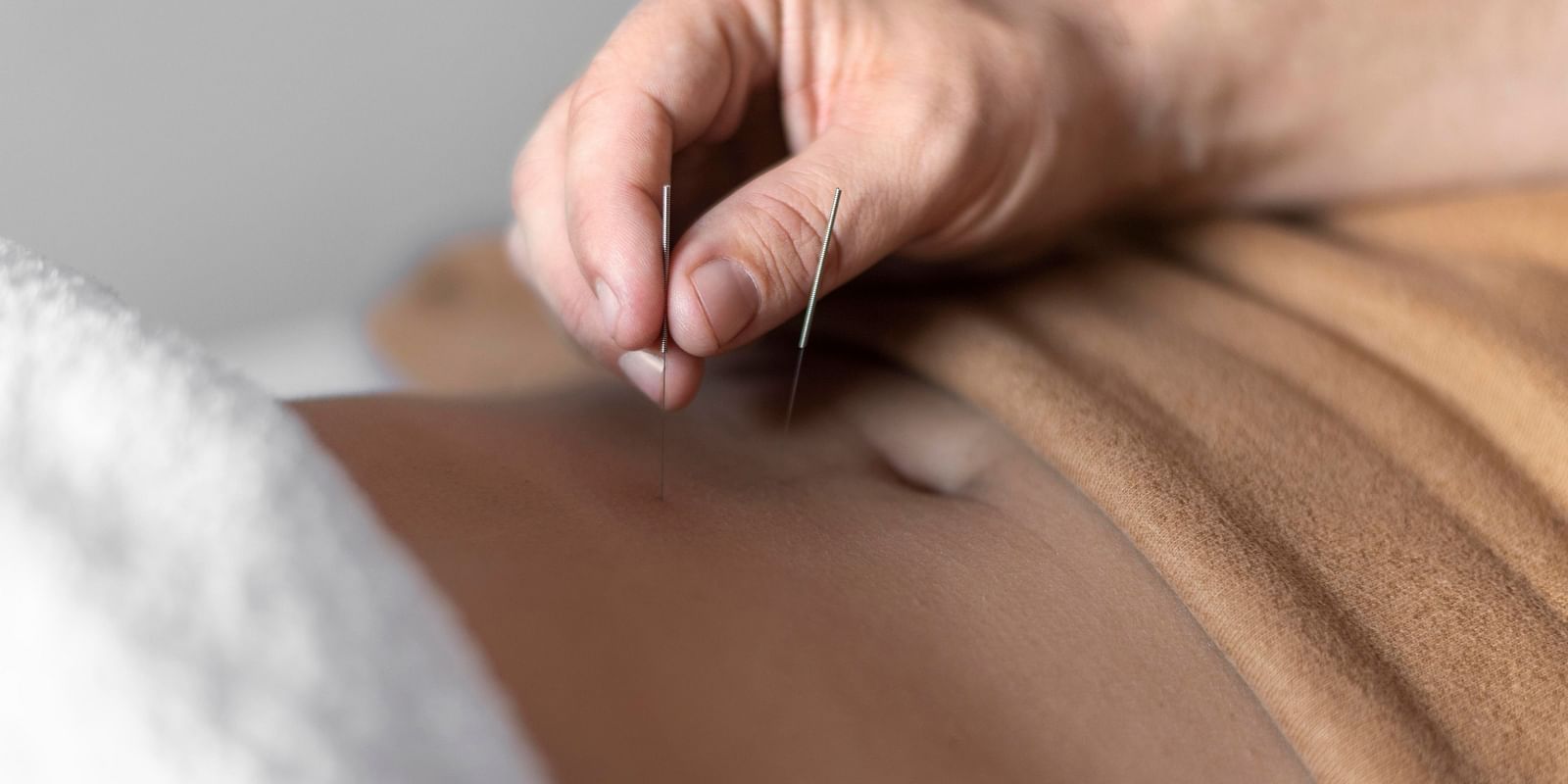- Face Massage and Facial Cupping: 30 Minutes
- Head Massage: 30 Minutes
- Head and Shoulder Massage: 30 Minutes
- Leg and Foot Massage: 30 Minutes
- Back and Shoulder Massage: 30 Minutes
- Full Body Massage: 60 Minutes
- Thai Tapping—Upper and Lower Back Massage: 60 minutes
- Bamboo Cupping—Full Body Massage: 60 Minutes
- Bamboo Roller—Full Body Massage: 60 Minutes
- Deep Tissue Massage: 60 Minutes
- Fire Cupping—Head, Shoulder, and Feet: 60 minutes
- Dry Cupping—Head, Shoulder, and Feet: 60 Minutes
- Hot Stone—Full Body Massage: 60 Minutes
- Dry Needle: 60 Minutes
- Sports Massage: 60 Minutes
- Senior Citizens Massage: 90 Minutes

Dry Needle: 60 Minutes to Restore Balance and Enhance Well-Being
Dry Needle
Travel is credited with originating the term "dry needling" in her 1983 book, Myofascial Pain and Dysfunction: Trigger Point Manual. In the book, she used the term to differentiate between two hypodermic needle techniques for trigger point therapy.
Key Benefits of Acupuncture
Pain relief: Dry needling can help with acute or chronic pain, and can provide immediate relief. It can also help with pain from headaches, migraines, and jaw and mouth problems.Improved range of motion: Dry needling can help improve your range of motion.
Reduced muscle tension: Dry needling can help reduce muscle tension and tightness.
Improved nerve function: Dry needling can help improve nerve function and communication.
Reduced inflammation: Dry needling can help reduce inflammation and swelling.
Encourages healing: Dry needling can help encourage the body's natural healing process.
Improved blood flow: Dry needling can help boost blood flow and provide oxygen and nutrients to your muscles.
How Acupuncture Works
Dry needling is a treatment that uses needles to stimulate trigger points in muscles to reduce pain and increase blood flowDry needling is a safe technique that can be used to treat a variety of musculoskeletal conditions, including shoulder pain, headaches, and knee pain. It's usually performed by physical therapists or licensed acupuncturists.
Needle Insertion: Fine needles are inserted into specific points on your body. The sensation is often described as a slight prick or tingling, but it should not be painful.
The needles may be left in place for 15 to 30 minutes while you relax.
Stimulation Techniques: In some cases, practitioners may use additional techniques such as electrical stimulation or heat (moxibustion) applied to the needles to enhance the effects of treatment.
Needle Insertion: Fine needles are inserted into specific points on your body. The sensation is often described as a slight prick or tingling, but it should not be painful.
The needles may be left in place for 15 to 30 minutes while you relax.
Stimulation Techniques: In some cases, practitioners may use additional techniques such as electrical stimulation or heat (moxibustion) applied to the needles to enhance the effects of treatment.
A Holistic Experience
Your 60-minute Dry Needle session will take place in a tranquil environment designed for relaxation. Soft lighting and calming music create an inviting atmosphere that encourages you to unwind completely. This holistic approach not only targets physical discomfort but also nurtures your mental state, promoting emotional balance.
Ideal for Various Conditions
Dry needling is a physical therapy technique that can help with a variety of conditions, including:
- Musculoskeletal conditions: Chronic lower back pain, neck pain, shoulder pain, rotator cuff pain, tennis elbow, whiplash, hip pain, and more
- Joint issues: Degenerative disk diseases, sacroiliac joint dysfunctions, and knee pain
- Tendonitis: Achilles tendinitis, biceps tendinitis, and other tendonitis
- Headaches: Migraines and tension-type headaches
- Repetitive motion disorders: Carpal tunnel syndrome and other repetitive motion disorders
- Other conditions: Pelvic pain, night cramps, sciatica, and more
In a Nutshell
A 60-minute Dry Needle session offers a powerful way to restore balance within your body while providing significant health benefits. It involves the use of needles to stimulate and break up knotted or hard muscle tissue called “trigger points” usually located deeper in the body.